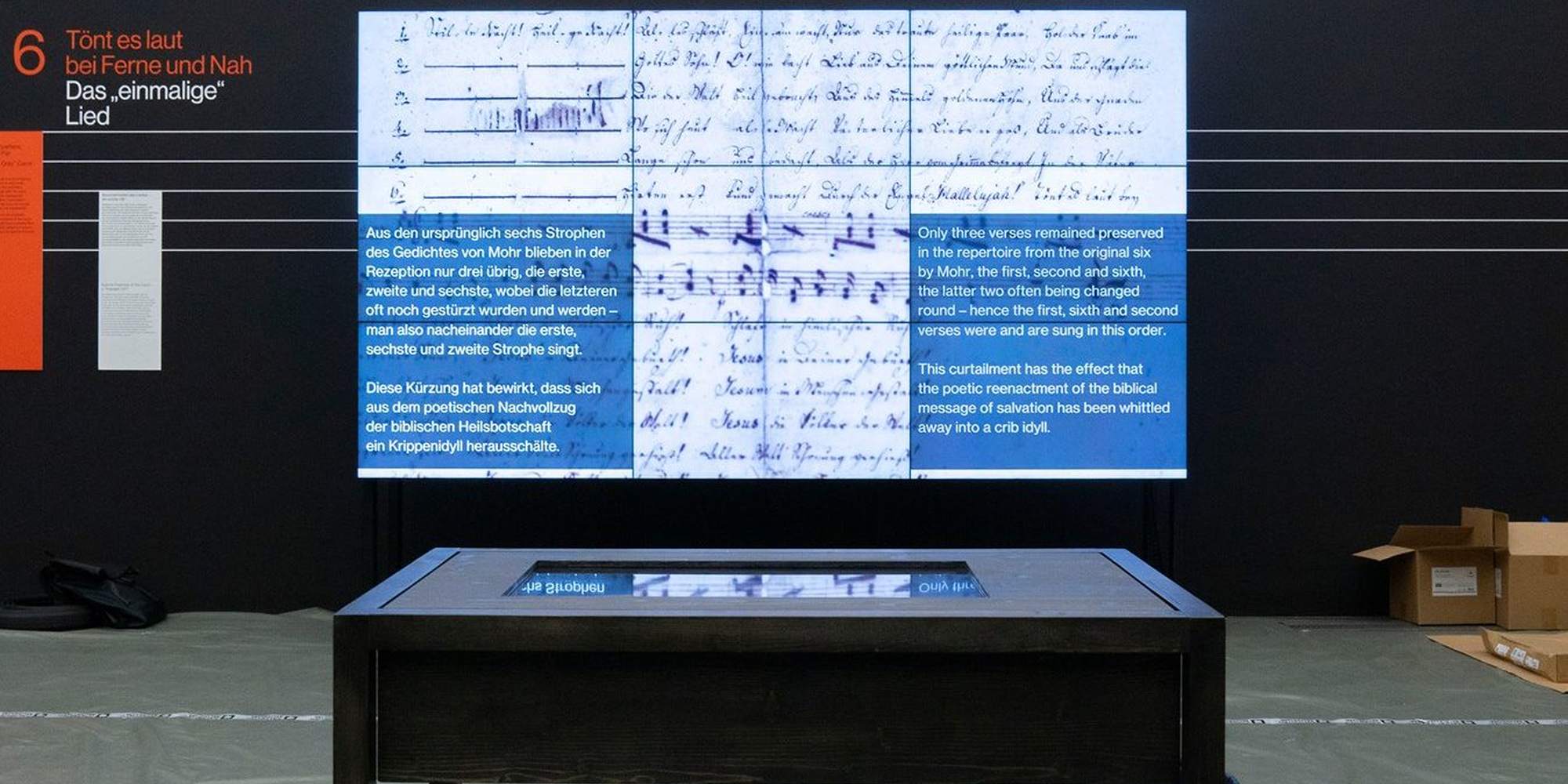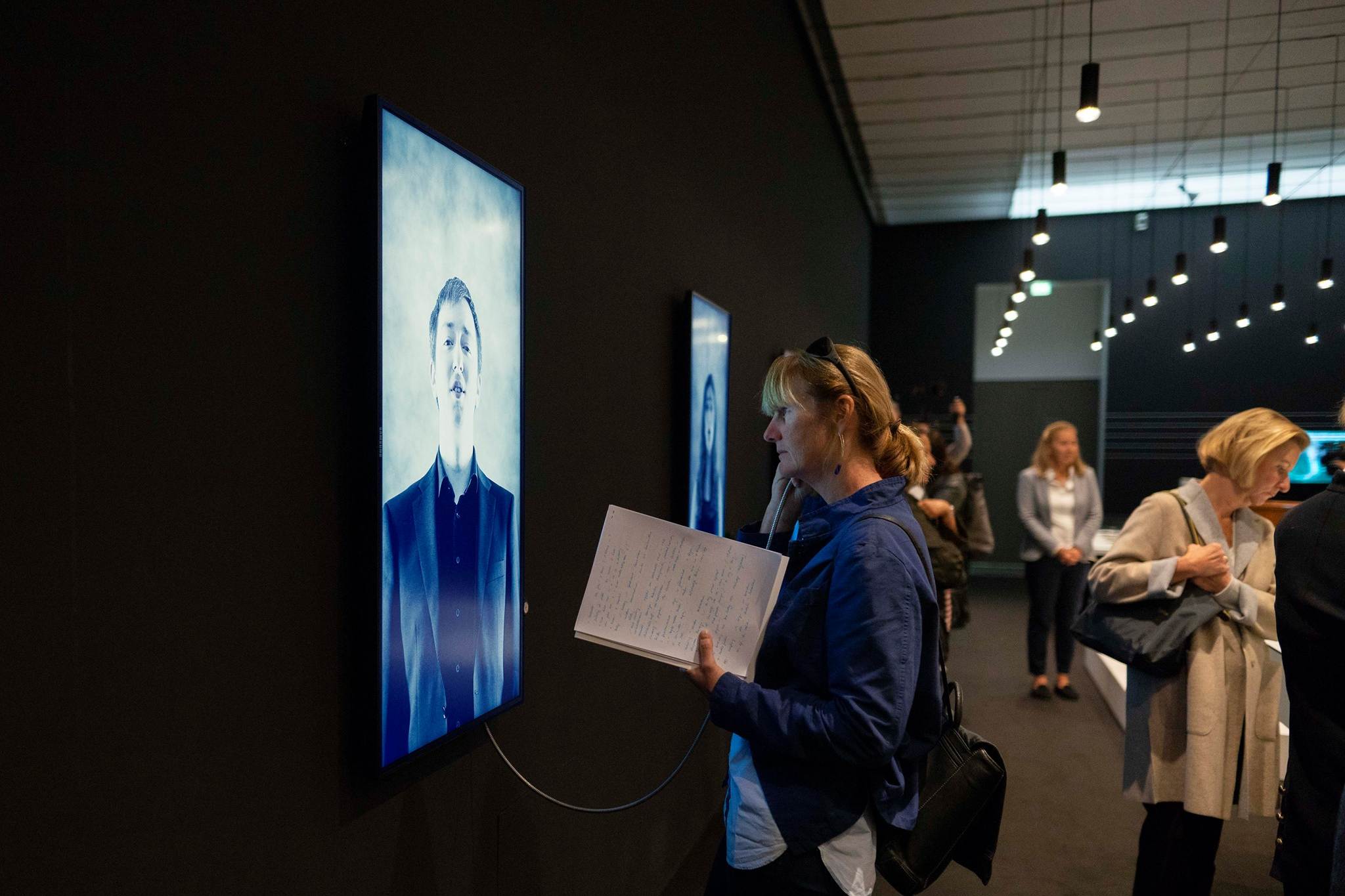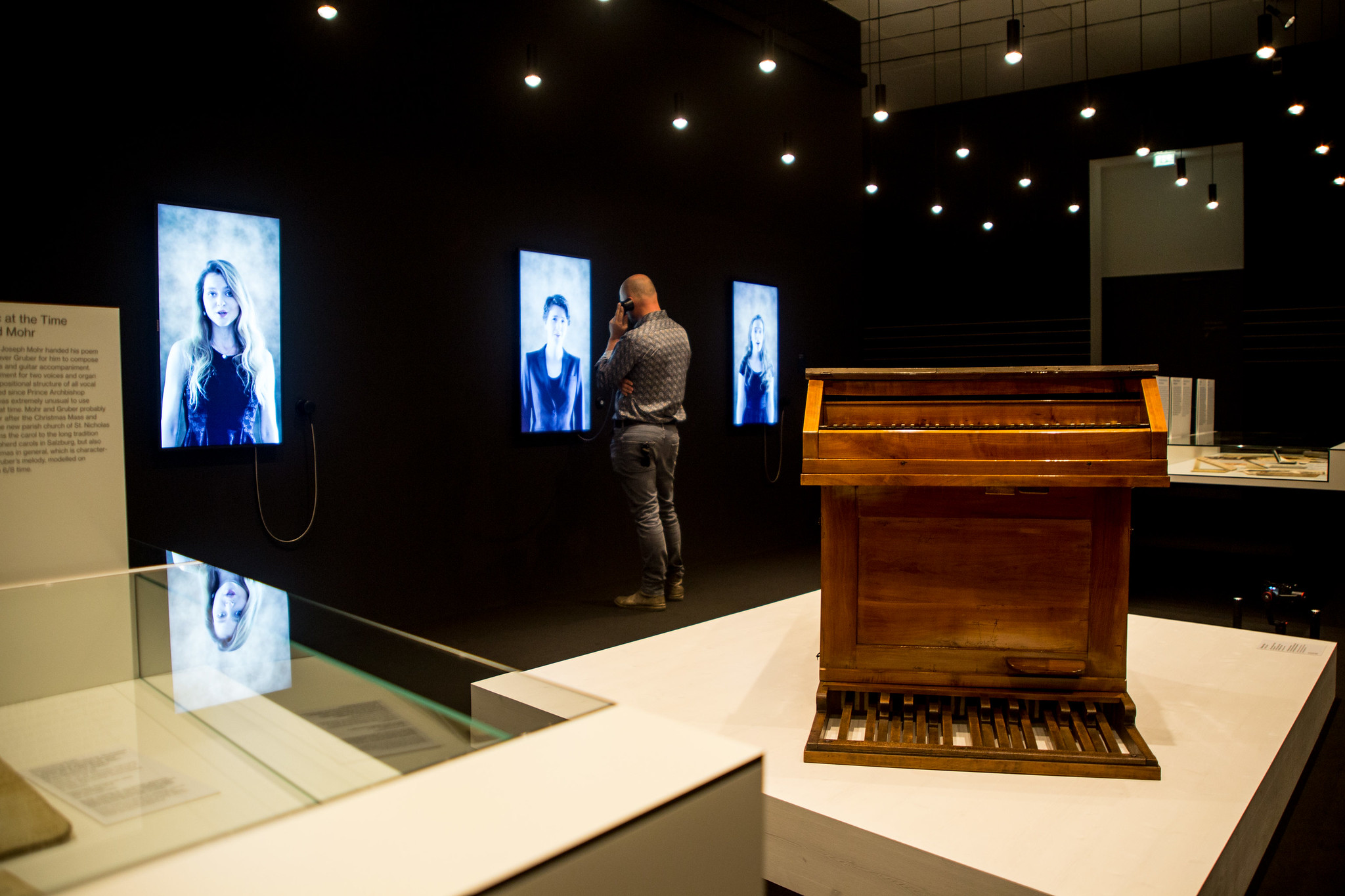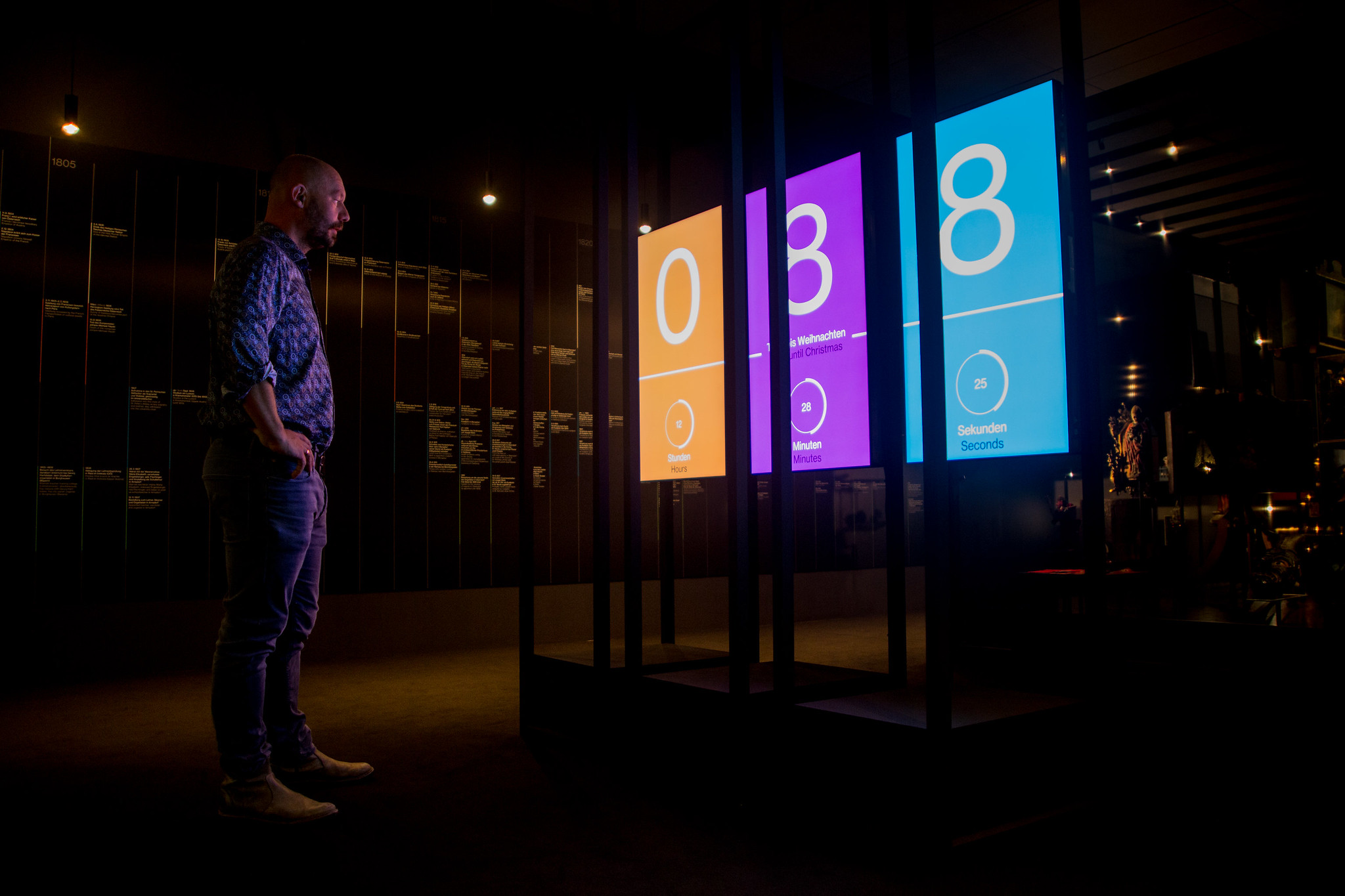On the 200th anniversary of the Christmas classic Stille Nacht, heilige Nacht the Salzburg Museum, as one of seven parts of the Salzburg Provincial Exhibition, presented various facets of the song in the curated tour Silent Night 200 – History. Message. Present.
In six exhibition sections, based on the six verses of the composition, visitors were able to approach the world-famous classic from new perspectives in predominantly soundless formats. In addition to historical sound recordings, objects, documents and two autographs, the Ars Electronica Futurelab also participated with three media installations.
A year-round Advent calendar counted the days, hours, minutes and seconds until Christmas and opened the exhibition with the countdown until silent night. For the second installation, students from the Mozarteum sang the song in 15 different languages. The singers voices morph into each other, recalling the intercultural spread of the song and the historic moment of peaceful solidarity in the midst of the First World War, when on 24 December 1914 a short armistice on the Western Front was accompanied by joint singing of Silent Night in various languages. The third, interactive format, splits the original sheet into melodic structures and motifs, opens up new approaches to musicological research and interpretations, transcribes the original autograph score and translates Joseph Mohr’s poem into English.
For the development of the Futurelab installations, the complex history of the creation and reception of the Christmas classic represented a broad field for discussion. From commercialization and kitsch to political appropriation and instrumentalization to the idea of an international peace song, an attempt was made to explore the scope, cultural significance, and experiential possibilities of Silent Night, Holy Night.
Read more in an interview with Stefan Mittlböck, Project Manager at the Ars Electronica Futurelab, Martin Hochleitner, Director of the Salzburg Museum, and Peter Husty, Chief Curator of the Salzburg Museum.
Credits
Ars Electronica Futurelab: Peter Freudling, Stefan Mittlböck-Jungwirth-Fohringer
Salzburg Museum: Birgit Gampmayer, Martin Hochleitner, Peter Husty
Universität Mozarteum Salzburg: Thomas Hochradner




